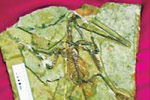Art
The imperial jade seal
Updated: 2007-12-19 11:45
(chinaculture.org)
The Heirloom Seal of the Realm(Chinese: 传国玺), is a jade seal carved out of the He Shi Bi, a historically famous piece of jade.
  |
|
|
Creation
In 221 BC, the Seal was created when Qin Shihuang destroyed the remaining Warring States and united China under the Qin Dynasty. The He Shi Bi was a famous piece of jade stone which previously belonged to the Zhao state.
 |
|
The Jade Royal Seal of Empress of the Western Han Dynasty(206BC-AD204) |
Passing into the hands of the new Emperor of China, he ordered it made into his Imperial seal. The words “受命于天,既寿永昌” (roughly translated as "The Mandate is received from Heaven, May He have Longevity and Prosperity") were written by Prime Minister Li Si, and carved onto the seal by Sun Shou.
Propagation
At the death of the second Emperor of Qin, his successor Zi Yin proffered the seal to the new emperor of the Han Dynasty, where after it was known as the "Han Heirloom Seal of the Realm". At the end of the Western Han Dynasty in 9 AD, Wang Mang, the new ruler, forced the Han empress dowager to hand over the Seal. The empress dowager, in anger, threw the Seal on the ground, chipping one corner. Later Wang Mang ordered the corner to be restored with gold.
 |
|
The Jade Royal Seal of Emperor Yongzheng of the Qing Dynasty (1644-1911) |
This seal passed on even as dynasties rose and fell. It was seen as a legitimizing device, signaling the Mandate of Heaven. During turbulent periods, such as the Three Kingdoms period, the seal became the object of rivalry and armed conflict. Regimes which possessed the seal declared themselves, and are often regarded historically, as legitimate. At the end of the restored Han Dynasty in the 3rd Century AD, Sun Jian found the Imperial Seal on the body of a court servant who had committed suicide by diving into a well. His son Sun Ce gave the Seal to Yuan Shu in return for 3000 soldiers, which he used to found the Kingdom of Wu. When Yuan Shu was defeated, the Seal came into the hands of Cao Cao, whose son Cao Pi proclaimed the Wei Dynasty as the legitimate successor state to Han and the other rival dynasties Shu-Han and Wu to be illegitimate.
  |
|
|
Loss
The Seal was passed through the Wei Dynasty, Jin Dynasty, Sixteen Kingdoms period, Sui Dynasty and Tang Dynasty, but was lost to history in the Five Dynasties and Ten Kingdoms Period.
Three theories exist as to how it was lost:
1. At the end of the Tang Dynasty, when the last Emperor died by self-immolation.
2. In 946 when the Emperor Taizu of Liao captured the last Emperor of the Jin state.
3. The Seal came into the hands of the Yuan emperors. When the Ming armies captured the Yuan capital in 1369, it captured just one out of the eleven personal Seals of the Yuan emperors. The Heirloom Seal was not found. In 1370, Ming armies invaded Mongolia and captured some treasures brought there by the retreating Yuan emperor. However, the Heirloom Seal was again not among these.
Specials

President Hu visits the US
President Hu Jintao is on a state visit to the US from Jan 18 to 21.

Ancient life
The discovery of the fossile of a female pterosaur nicknamed as Mrs T and her un-laid egg are shedding new light on ancient mysteries.

Economic Figures
China's GDP growth jumped 10.3 percent year-on-year in 2010, boosted by a faster-than-expected 9.8 percent expansion in the fourth quarter.